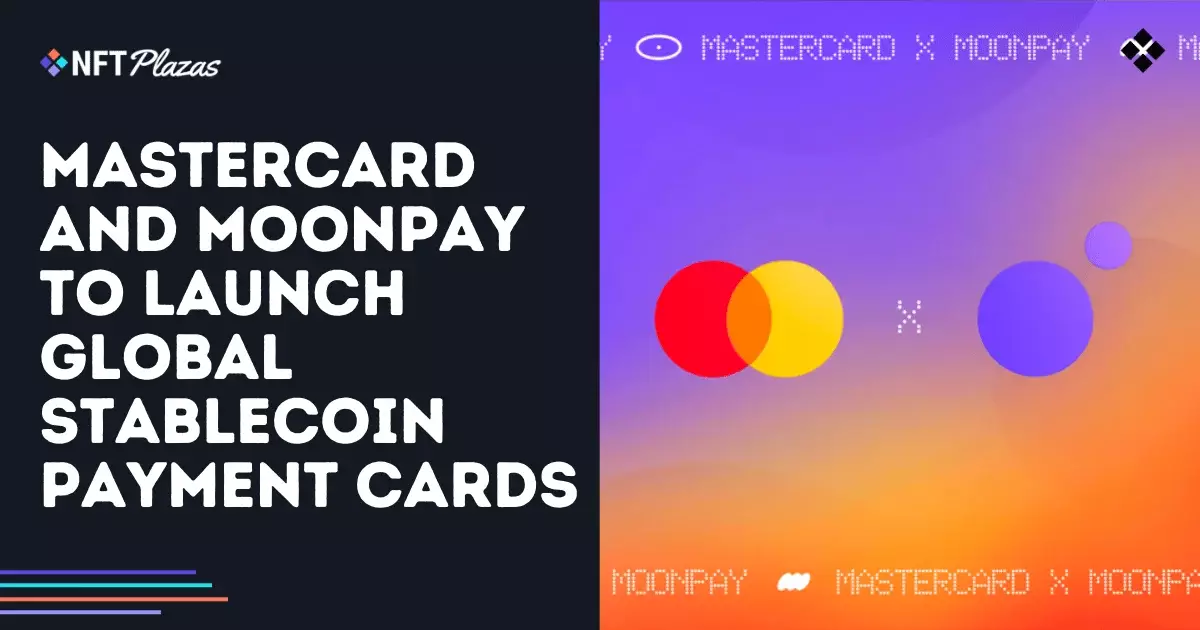Mastercard’s latest foray into the cryptocurrency realm, in partnership with MoonPay, represents a significant moment for the payments industry and the adoption of stablecoins. The introduction of payment cards that facilitate transactions using stablecoins could very well transform how individuals and businesses engage with digital currencies. What sets this initiative apart is its underlying technology provided by Iron, which MoonPay acquired recently. With the aim of streamlining the transaction process, the initiative promises to ease the complexities surrounding crypto wallets and market volatility, thus making it more enticing for everyday consumers and merchants alike.
These new cards are not just a gimmick; they symbolize a shifting tide within the financial landscape. The capability to seamlessly convert stablecoins into fiat at the point of sale affords both merchants and users an unprecedented opportunity to transact in a fast-moving, digital-first economy. This innovative approach reflects a growing recognition among traditional financial institutions regarding the potential of stablecoins to enhance payment infrastructure.
Navigating Uncertain Regulatory Waters
The potential of the stablecoin ecosystem remains clouded by uncertainty, particularly regarding regulatory frameworks. The Securities and Exchange Commission (SEC) has made strides in defining certain stablecoins, yet considerable ambiguity persists, notably around yield-bearing assets and algorithmic variants. This state of regulatory limbo presents both a challenge and an opportunity – while it may deter some businesses, it simultaneously opens the door for established players like Mastercard to navigate new waters confidently.
Moreover, the SEC’s recent decision to close an investigation into PayPal’s stablecoin transaction without further enforcement action may signal a more lenient stance towards stablecoin regulation. However, this leniency doesn’t change the fact that a clearer set of guidelines is urgently needed. Without a solid legal framework, the risks for businesses aiming to leverage these technologies remain significant.
Stakes for Traditional Payment Giants
Visa is similarly making waves with its own pilot program targeting stablecoin transactions across Latin America, emphasizing that traditional payment giants are no longer dismissing the cryptocurrency wave. Mastercard, by pairing up with MoonPay, showcases its strategic foresight and willingness to invest in an evolving payment landscape. This move is not merely about Integration purposes; it’s about capturing market share in a space that is quickly gaining traction.
While skeptics may question the sustainability of the stablecoin market, the steady development of crypto payments signals an appetite for progress within the industry. Embracing this change can position Mastercard, MoonPay, and their cohorts on the cutting edge of the financial revolution, potentially setting the standard for how digital currency transactions are conducted in the future.
The Next Frontier in Financial Services
As this partnership seeks to bridge the gap between fiat and digital currencies, it also raises questions regarding long-term sustainability and user education. If consumers are to embrace stablecoins, there must be a concerted effort to inform them about the underlying mechanics and benefits. The potential for stablecoins to revolutionize payments is immense, yet that potential hinges on a firm commitment from businesses to cultivate an informed user base.
Ultimately, Mastercard and MoonPay’s endeavor appears to be a gamble worth taking. As they tread into this rapidly evolving sector, their ability to adapt and build trust will determine the success of stablecoins in mainstream financial arenas. This quest will not only shape the path for their own futures but also the overall landscape of digital finance in a world that is increasingly gearing towards seamless and instantaneous transactions.















